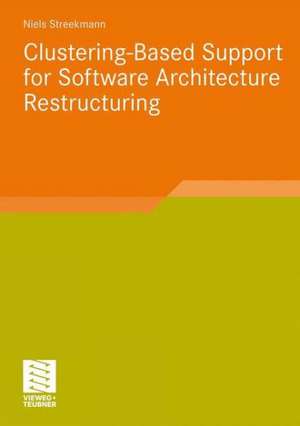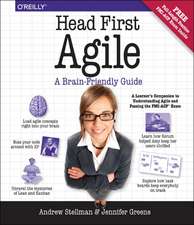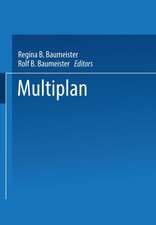Clustering-Based Support for Software Architecture Restructuring: Software Engineering Research
Autor Niels Streekmannen Limba Engleză Paperback – 14 dec 2011
Preț: 328.79 lei
Preț vechi: 410.98 lei
-20% Nou
Puncte Express: 493
Preț estimativ în valută:
62.92€ • 68.32$ • 52.85£
62.92€ • 68.32$ • 52.85£
Carte tipărită la comandă
Livrare economică 22 aprilie-06 mai
Preluare comenzi: 021 569.72.76
Specificații
ISBN-13: 9783834819536
ISBN-10: 3834819530
Pagini: 264
Ilustrații: XIX, 241 p. 60 illus.
Dimensiuni: 148 x 210 x 23 mm
Greutate: 0.32 kg
Ediția:2011
Editura: Vieweg+Teubner Verlag
Colecția Vieweg+Teubner Verlag
Seria Software Engineering Research
Locul publicării:Wiesbaden, Germany
ISBN-10: 3834819530
Pagini: 264
Ilustrații: XIX, 241 p. 60 illus.
Dimensiuni: 148 x 210 x 23 mm
Greutate: 0.32 kg
Ediția:2011
Editura: Vieweg+Teubner Verlag
Colecția Vieweg+Teubner Verlag
Seria Software Engineering Research
Locul publicării:Wiesbaden, Germany
Notă biografică
Dr. Niels Streekmann completed his doctoral thesis under the supervision of Prof. Dr. Wilhelm Hasselbring at the Department of Software Engineering at the Christian Albrechts University, Kiel. He works as a consultant and software architect.
Textul de pe ultima copertă
The maintenance of long-living software systems is an essential topic in today’s software engineering practice and research. Software Architecture Restructuring is an important task to adjust these systems to current requirements and to keep them maintainable.
Niels Streekmann introduces an approach to Software Architecture Restructuring that semi-automates this task by introducing graph clustering. The approach provides an iterative process that systematically incorporates human architectural knowledge for the improvement of the restructuring result. Thus, it supports the task of planning the transfer of an existing system to a target architecture and aims at reducing the required manual effort.
Niels Streekmann introduces an approach to Software Architecture Restructuring that semi-automates this task by introducing graph clustering. The approach provides an iterative process that systematically incorporates human architectural knowledge for the improvement of the restructuring result. Thus, it supports the task of planning the transfer of an existing system to a target architecture and aims at reducing the required manual effort.



















